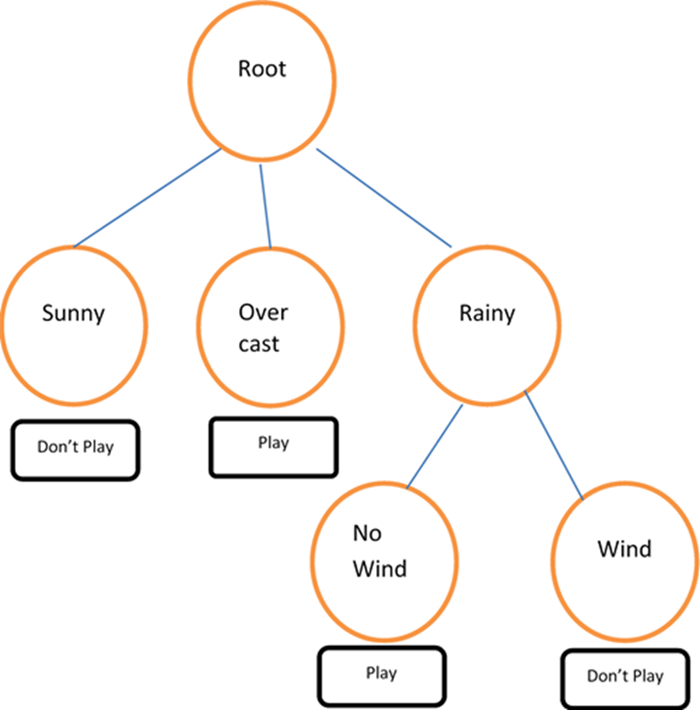Decision Trees – An Overview
Decision trees are data mining methods for predicting a single response variable based on multiple predictor variables. If the response variable is categorical or discrete, the data mining problem is a classification problem, whereas if the response is continuous, the problem is a type of regression problem. Decision trees are generally applicable in both situations.
A trivial but illustrative example regards the decision to play golf or not, depending on the weather. The training data, from Quinlan (1993), is given in Table 1 and a decision tree fit to the data is shown in Figure 1, , Play Golf? This tree has a size of 6, 4 terminal nodes, and a height or depth of 2.. Other examples include predicting the chance of survival for heart attack patients based on age, blood pressure and other vital signs; scoring loan applications based on credit history, income, and education; classifying an email as spam based on its characteristics, and so on.
Tree-growing algorithms have similar steps: starting with all observations in a root node, a predictor variable is selected to split the dataset into two or more child nodes or branches. The form of the split depends on the type of predictor and on specifics of the algorithm. If the predictor is categorical, taking discrete values {A, B, C, D} for example, the split may consist of two or more proper subsets, such as {A}, {B, C}, and {D}. If the predictor is continuous, a split will consist of two or more intervals, such as X <= 2, X > 2. The splitting procedure is then repeated for each child node and continued in such manner until one of several possible stopping conditions is met. The result of the decision tree algorithm is a tree structure with a root and a certain number of branches (or nodes). Each branch defines a subset or partition of the data and, conditional on that subset of data, a predicted value for the response variable. A traversal of a branch of the tree thus leads to a prediction, or decision about the response variable. To predict a new out of sample observation, we find the terminal node to which the observation belongs by traversing the tree and finding the data subset (branch) that contains the observation.
For example, the decision tree in Figure 1, , Play Golf? This tree has a size of 6, 4 terminal nodes, and a height or depth of 2. can be expressed as a set of rules: If the weather is sunny, don’t play golf. If the weather is overcast, play golf. If the weather is rainy and there is no wind, play golf. On the other hand, if it is rainy and windy, don’t play golf.
Decision trees are intuitive and can be very effective predictive tools. As with any predictive model, a decision tree should be tested on hold-out datasets or refined using K-fold cross-validation to prevent over-fitting.

Figure 1, Play Golf? This tree has a size of 6, 4 terminal nodes, and a height or depth of 2.
|
Outlook |
Temperature |
Humidity |
Wind |
Play |
|
sunny |
85 |
85 |
FALSE |
don't play |
|
sunny |
80 |
90 |
TRUE |
don't play |
|
overcast |
83 |
78 |
FALSE |
play |
|
rainy |
70 |
96 |
FALSE |
play |
|
rainy |
68 |
80 |
FALSE |
play |
|
rainy |
65 |
70 |
TRUE |
don't play |
|
overcast |
64 |
65 |
TRUE |
play |
|
sunny |
72 |
95 |
FALSE |
don't play |
|
sunny |
69 |
70 |
FALSE |
play |
|
rainy |
75 |
80 |
FALSE |
play |
|
sunny |
75 |
70 |
TRUE |
play |
|
overcast |
72 |
90 |
TRUE |
play |
|
overcast |
81 |
75 |
FALSE |
play |
|
rainy |
71 |
80 |
TRUE |
don't play |
|
overcast |
81 |
75 |
FALSE |
play |
|
rainy |
71 |
80 |
TRUE |
don't play |






